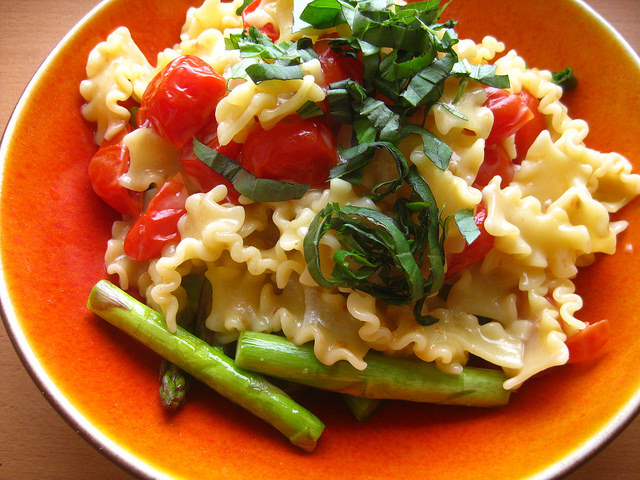Watching a movie where the main character is an American falling for a European is always an extremely bizarre experience for me.
It may seem like a strange thing to generalize, but if you really think about it, there are a lot of movies that fit this definition. French Kiss. Under the Tuscan Sun. What a Girl Wants. Roman Holiday. Midnight in Paris. Only You. My Life in Ruins. P.S. I Love You. At least six of the later Mary-Kate and Ashley movies.
(I never promised high-quality cinema on this list. By definition, the genre I’m describing is escapist at best and Mary-Sue-esque most of the time.)
It was Vicky Cristina Barcelona that spurred this most recent line of thinking, and as I watched Vicky fall in love with a very sexy Spaniard even though she had a perfectly lovely man waiting for her at home, I realized that there’s no way for me to really comprehend this sort of movie, in that I can’t quite insert my own life experience into what these so-called typical Americans are experiencing. I don’t live with a khaki pants wearing lawyer, but I don’t live with a disturbed artist either. The foreignness of Barcelona can still mystify me, as can that of the man in permanently wrinkled linen. My Frenchman is far from the bourgeois 16eme resident that would be the best cultural transfer for a rich Carter-the-third-called-Trip depicted on screen, but it’s comfortable. It’s my normal.
European, in American cinema, is a synonym for new. So what happens when European is normal? What does novelty look like then?
Paris stopped being foreign to me a long time ago. I can still see the beauty and quirkiness in my everyday life here, don’t get me wrong. Maybe it’s the fact that I’ve had so many American visitors of late that I can see how this has truly become my reference, as I distance myself more and more from the world I grew up in.
But what surprised me most of all, as I was pursuing this line of thought, was a visit from a boarding school friend I hadn’t seen in four years. One of those people I used to know as well as myself but, on the spring evening a few weeks ago when we shared wine and dinner near Mabillon, a person I had to ask what she did for a living. Strange, but there it is.
What was particularly strange about this conversation was that, as I explained a bit of this train of thought, she got it. She felt the same way. Television didn’t feel like reality for her, she who lived in Boston, New York and Chicago. It felt false… the way it’s supposed to feel. The falseness and distance I feel for what I see onscreen has nothing to do with the fact that I don’t live in the States. It’s fiction. It seems so obvious to say it now, but watching shows on television here for the past few years, I’ve been assuming I was missing out on something that, apparently, I’m not.
For years, I have been assuming that what I see on television about Americans is the truth. I have become, for all intents and purposes, the Parisian who asks if all Americans are fat or have guns. I have replaced my personal day-to-day experience in America, a truth that’s slowly fading, with something that Hollywood wants us to believe is the truth.
It’s not the fact that I buy baguette or sometimes say pardon to Americans when I bump into them or find it insane to do any sort of errands after dinner that has made me as European as I suppose I’m starting to feel today. It’s that I’m willing to believe what the media wants me to believe about my own people. And that’s definitely one of the strangest realizations I’ve had since I moved here.
Risotto-Style Pasta with Gorgonzola, Tomatoes and Asparagus
1 pound asparagus
1/2 pound cherry tomatoes
1 Tbsp. olive oil
1 tsp. olive oil
1 shallot, finely chopped
1 cups dry pasta
1/4 cup dry white wine
2 cups stock of your choice
1/4 cup Gorgonzola cheese
salt and pepper
fresh basil, for garnish
Trim the ends of the asparagus and cut them each into three pieces. Halve the cherry tomatoes. Toss the vegetables with the olive oil and a pinch of salt, and lay them on a baking sheet. Roast at 350 degress for 25-30 minutes, until the tomatoes have broken down and the asparagus are tender.
Heat the stock in a saucepan. Heat the olive oil in a separate pot and add the shallot. Cook until translucent, then add the pasta. Cook 1-2 minutes, until slightly translucent at the edges. Add the wine and stir until it is absorbed.
Add the stock in two additions, making sure that it is absorbed before adding the next addition. Taste the pasta before adding the second serving of stock.
When the liquid has mostly absorbed and the pasta is tender, remove the pot from the heat and add the cheese and vegetables. Cover without stirring for 2 minutes. Transfer the pasta to a serving bowl and stir to combine. Season to taste with salt and pepper and garnish with fresh basil.


